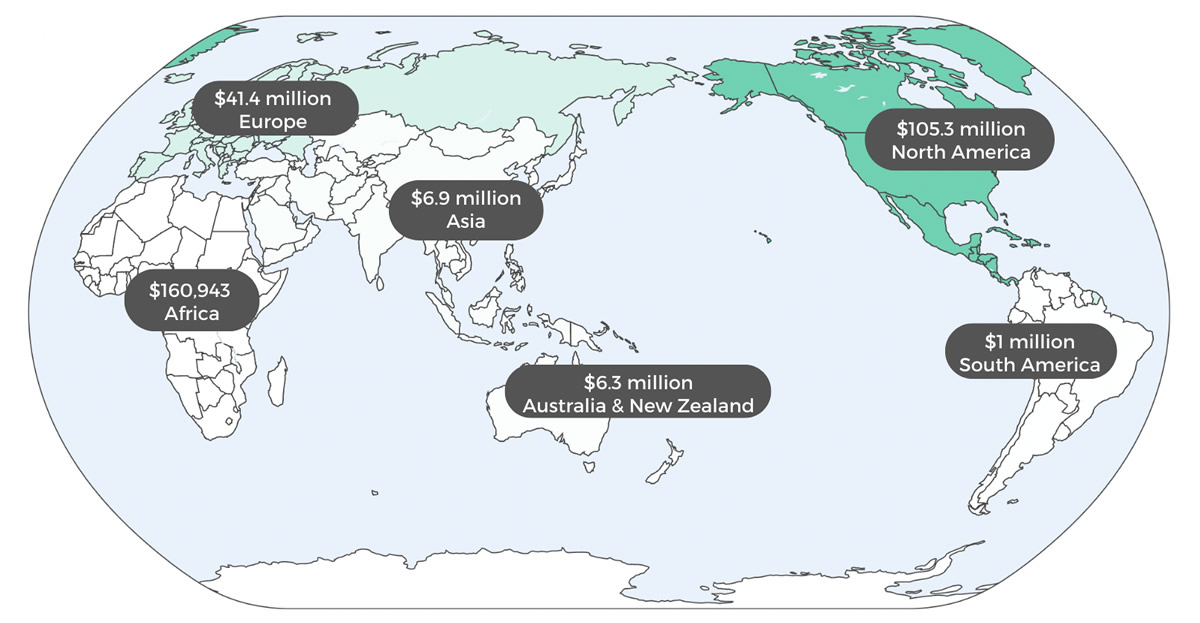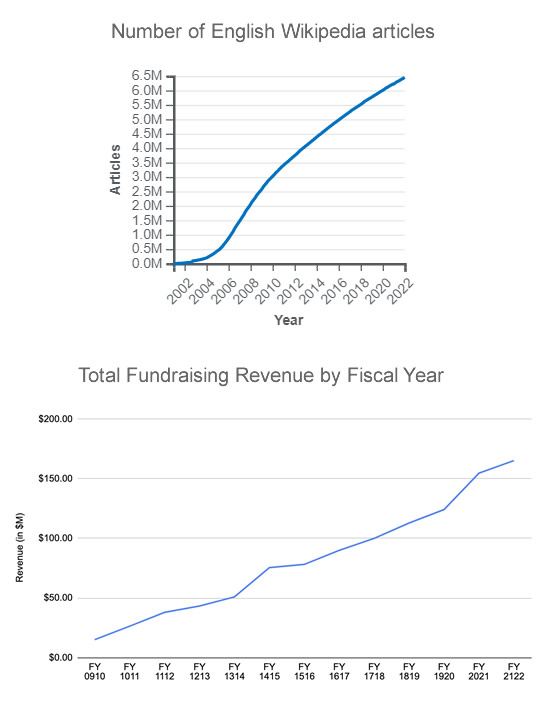In the 2021-22 fiscal year, the Wikimedia Foundation achieved more than 150 million in revenue thanks to online donations. The Foundation's digital fundraising is so successful that some think it's too much.

👉 Wikipedia seems to have a winning digital fundraising strategy. What can we learn from it?
🙋♂️
My name is Gianfranco Pooli. I have been working in digital marketing for nonprofits for more than 15 years. On Digital Fundraising I share how to organize a digital strategy that makes sense, with practical examples and templates. To reach a consistently growing audience, win new donors and supporters.
Learn more about the project and about me.
Table of contents
What we mean by digital fundraising
Digital fundraising is the application of online marketing techniques typical of business enterprises to non-profits, to achieve fundraising goals: brand awareness, email signups, online donations.
Digital fundraising, just like Digital Marketing, groups a set of different specialties and skills:
-
The ability to attract visitors to your pages: with e-mail marketing, social media, but also paid advertisement and organic traffic.
-
Conversion optimization, depending on your goals; what percentage of my visitors do I really get to know?
-
Engaging a lasting relationship with supporters, promoters and members of the community.
Digital Fundraising begins with a shift in point of view. It means adopting a digital marketing perspective on what you do online.
There are tools and methodology which you can use to decide your next steps, based on data and information.
👉 The aha moment is when you see the correlation between your actions and a steadily growing audience, and the possibility of measuring goals and performances on a dashboard.

Digital strategy for nonprofits
Digital Strategy means organizing and coordinating your actions across your properties on the web, with the aim of growing audience and conversions.
Online traffic come generally from these sources: email, social media, paid advertisement and organic.
While the best strategy is to diversify, many nonprofits aren't really aware of the potential organic reach of their website.
Nowadays you don't need a website, a facebook page is enough.
For businesses looking to grow, the most sensible way to build their online presence is often around their own website.
For a nonprofit, it's even more so. Why? It has to do with the concept of Domain Authority.
Domain Authority
Many nonprofits focus their marketing efforts on social media, while keeping the website as a showcase of their activities.
Yet Wikipedia does very little social media marketing: 70% of its visitors come from search engines, and the remaining traffic is direct or paid.
Of course, you say: it's Wikipedia. Its the first site you find when you search on Google. Actually so many people find that the fundraising campaign is a success even if only 2% of people donate, according to its annual report.
What is the authority of a website
Wikipedia is at the top of Google searches because it is the site with the most authority of all.
It's an authoritative website for two reasons:
- it has a great amount of well interconnected, high-quality content
- a big number of third-party websites link it for reference.
These two factors, content and links, are the strongest signals that make a site authoritative.
👉 An authority website has an advantage on search engines. It attracts a constant flow of users from those; even when it's not running a campaign.
The more people finds you, the more referrals and social media shares you get, in a virtuous circle.
What authority does my nonprofit website have?
Your nonprofit organization isn't Wikipedia, but it's certainly competent in its field.
In addition to stories, content that is easily shareable on social media, there is a knowledge base that you can use to structure your website - content which matches the search intent of the users of Bing, DuckduckGo and Google.
👉 Developing authority in your field is not only central to search engines and the web: it helps to better understand the things you do, and to structure your content on the keywords searched by users.
Your nonprofit web domain has a high value
It's your property, and when users leave Facebook for the next social platform, your site is still the center of digital activity.
The fact the that domain of your organization has been around for some time, that you have made it grow by publishing new content, linking to other sites and being linked to, all of this contribute to its authority.
👉 If you have a blog, don't leave it as a subdomain of wordpress.org or medium: redirect it to your own domain. An internet domain is in fact a property that grows over time - only many outside the digital marketing community aren't aware of it.
Content strategy for nonprofits
For-profit businesses publish content on their website, email newsletters and social media pages as part of a growth content strategy.
Ever feel like you have a lot of scattered ideas, but aren't exactly sure of their impact?
A content strategy means publishing for a reason, usually based on data: analysis of the topic, competitors, keywords and recipients of the message.
It also requires organization, planning and a workflow schedule: the opposite of improvising from week to week.
About Digital Fundraising
Hi, I'm Gianfranco. I apply digital marketing techniques used by business enterprises to nonprofits; I've been doing so for 15 years with organizations from all over the world. On Digital Fundraising I share a methodology to develop a digital strategy that just makes sense: to inform, win new supporters or collect more donations.